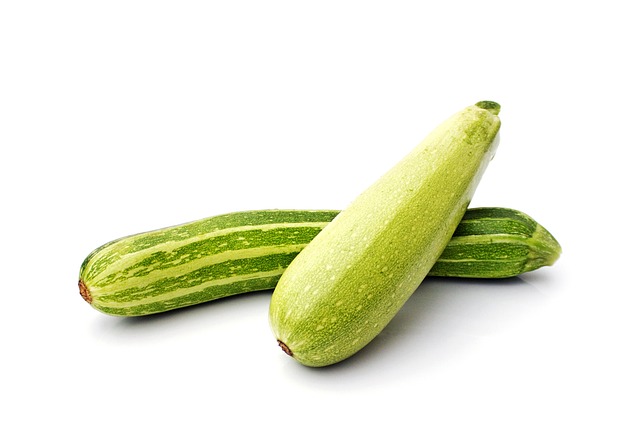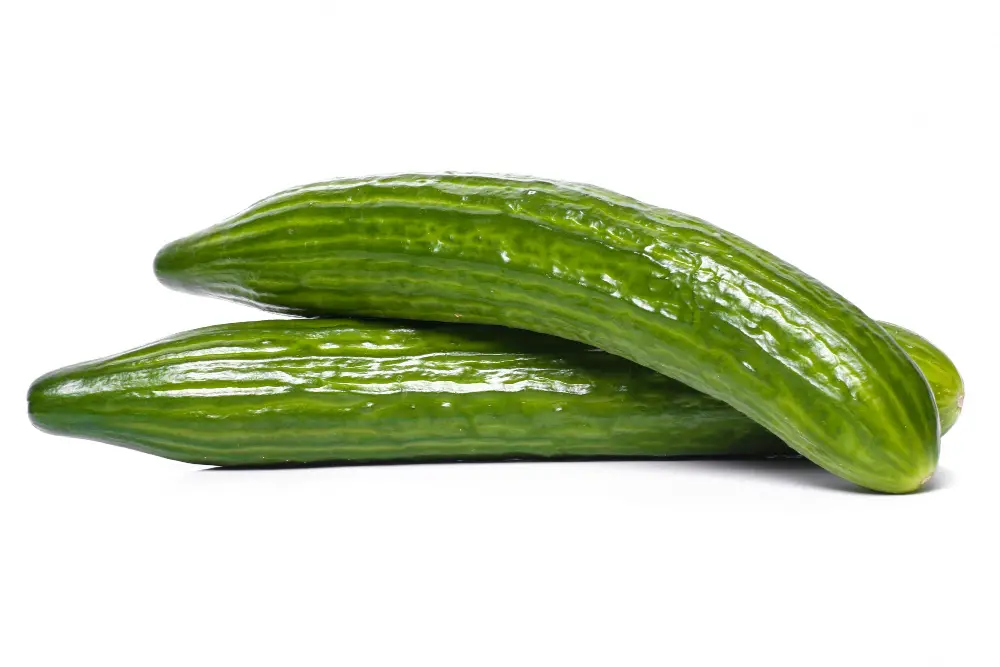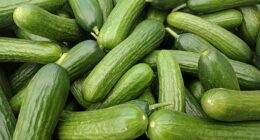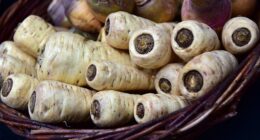Courgette is a mild, versatile summer squash, while cucumber is a refreshing, crunchy vegetable often eaten raw in salads and pickles.
TL;DR Courgette Vs. Cucumber
Courgettes, also known as zucchinis in some parts of the world, are small summer squash with a mild flavor. They can be eaten raw or cooked and are often used in savory dishes such as stir-fries, salads, and pasta.
Cucumbers are cool and refreshing vegetables commonly enjoyed raw in salads or pickled for added tanginess. Their crisp texture and high water content make them a perfect choice for hydrating snacks on hot summer days.
What is a courgette?

Courgette, also known as zucchini in some parts of the world, is a summer squash that belongs to the Cucurbitaceae family. It is characterized by its elongated shape and smooth green skin. With a mild and slightly sweet flavor, courgettes are incredibly versatile in the kitchen.
Courgettes are low in calories but high in essential nutrients like vitamin C and potassium. They also provide dietary fiber which aids digestion.
What is a cucumber?

Cucumbers are cool and refreshing vegetables that are often enjoyed in salads or used as a healthy snack. These cylindrical-shaped fruits belong to the gourd family, Cucurbitaceae, and come in different varieties. They have a high water content which gives them their crisp texture and hydrating properties.
Cucumbers can be either green or yellow, depending on the variety. The skin of cucumbers is smooth with slight ridges, while the flesh inside is juicy and mildly sweet.
Cucumbers are low in calories but packed with nutrients. They contain vitamins such as vitamin K, vitamin C, magnesium, potassium, and dietary fiber. Additionally, cucumbers also provide antioxidants that help protect against cell damage.
Courgette Vs. Cucumber – Key differences
| Aspect | Courgette (Zucchini) | Cucumber |
|---|---|---|
| Scientific Name | Cucurbita pepo | Cucumis sativus |
| Shape | Generally cylindrical with tapering ends | Cylindrical, elongated with rounded ends |
| Skin Color | Various: green, yellow, light green | Green, often with lighter streaks or ridges |
| Taste | Mild, slightly nutty, and delicate | Refreshing, crisp, with a mild taste |
| Texture | Tender and relatively soft | Crisp and crunchy |
| Edible Parts | Entire fruit is edible, including skin and seeds | Entire fruit is edible, including skin and seeds |
| Seed Size | Small and tender | Larger and noticeable |
| Cooking Uses | Versatile, can be grilled, sautéed, baked, fried or added to dishes | Often consumed raw in salads, pickled, used in sandwiches |
| Water Content | Moderately low water content | High water content, very hydrating |
| Nutritional Value | Rich in vitamins, minerals, and fiber | Low in calories, high in hydration, some nutrients |
| Plant Growth | Bushy, compact growth habit | Climbing vine, requires vertical support |
| Growing Season | Warm seasons (spring to summer) | Warm seasons, longer growing period |
| Pollination | Mostly self-pollinating | Usually requires pollination |
Courgette Vs. Cucumber – Similarities
- Family: Both courgettes and cucumbers belong to the same botanical family, Cucurbitaceae, also known as the gourd family.
- Plant Type: They are both warm-season, vining plants that thrive in similar growing conditions.
- Cultivation: Both courgettes and cucumbers are commonly grown as summer vegetables in home gardens and commercial farms.
- Flowering Plants: Both plants produce yellow, unisexual flowers, with separate male and female flowers on the same plant. They require pollination for fruit development.
- Pollination: While courgettes are often considered self-pollinating, both courgettes and cucumbers can benefit from pollinators like bees to ensure proper fruit development.
- Harvesting: The fruits of both plants are harvested when they are young and tender for the best flavor and texture.
- Edible Parts: Both the skin and seeds of courgettes and cucumbers are edible. The seeds are generally soft and unnoticeable in young fruits.
- Nutritional Profile: Both vegetables are low in calories and provide dietary fiber, vitamins (like vitamin C and some B vitamins), and minerals (such as potassium).
- Hydration: Both courgettes and cucumbers have high water content, making them refreshing and hydrating options, especially during hot weather.
- Health Benefits: Both vegetables are known for their potential health benefits, including aiding in digestion due to their fiber content and contributing to overall hydration.
Image Credits
Featured Image By – Photo by Alena Darmel
Image 1 By – h kama from Pixabay
Image 2 By – mohamed hassouna on Unsplash








